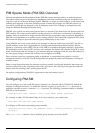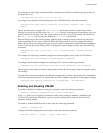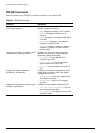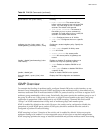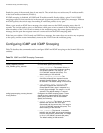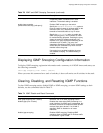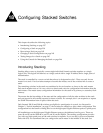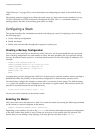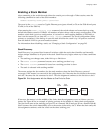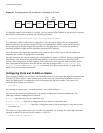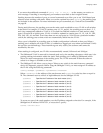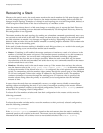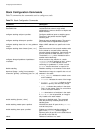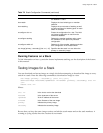
238 Summit 200 Series Switch Installation and User Guide
Configuring Stacked Switches
“Stack Discovery” on page 239 for more information on configuring the master in the middle of the
stack.
The stacking ports are tagged ports. When the stack comes up, these ports become members of every
VLAN in the stack to provide connectivity throughout the stack. The
show commands related to
stacking display the state of the stacking port (active or ready).
Configuring a Stack
This section describes the commands associated with setting up a stack. Configuring a stack involves
the following steps:
1 Create a backup configuration
2 Enable the master.
3 Enable each stack member through their respective console port.
Creating a Backup Configuration
You may not create a backup for the master switch. However, we do recommend that you create and
store a backup configuration for each member to allow the most flexibility and to provide the easiest
recovery should the master go down. A backup should contain VLANs with unique IP addresses. For
example:
create vlan backup-slot2-v1
config backup-slot2-v1 ip 10.60.111.2/24
config backup-slot2-v1 add port 48
config ipr add default 10.60.111.1
enable port 48
save
Assuming that port 48 is plugged into 10.60.111.1 in the network, when the member reboots, stacking is
disabled and either the primary or the secondary configuration in flash memory becomes active.
You should also configure the member to reboot after a set amount of time passes. The default setting,
none, causes the member to wait indefinitely for the master to regain control. Valid timeout entries are
specified in seconds between 30 and 3600 (an hour).
config stack slave timeout [none | <n>]
You may not create a backup for the master switch.
Enabling the Master
Only one switch can be the master in a stack. You create the master by entering the following command
on the switch you want to designate as the master:
enable stacking master ports <portlist>
Depending on the number of ports in the portlist, the software determines the physical configuration
of the stack (either daisy-chain or ring). If there are two ports, in the portlist, then the software will
assume that you are making a ring topology. You must specify local ports in the
portlist.



